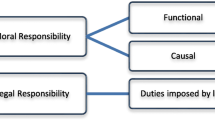Abstract
In the absence of any institution for imposing legal liability on global business, the idea of instituting a cosmopolitan court for international corporate offenses is advocated. The proposal is then critically examined and defended in light of a number of key objections. Having both civil and criminal jurisdiction, such a tribunal could benefit domestic and international legal systems, multinational corporations, and victims of transnational and international corporate misdeeds. By laying down minimal global standards of corporate liability, resolving conflicts between the regulatory activities of national legal systems, and affording redress for aggrieved parties in countries with inadequate legal infrastructures, the tribunal would promote the objectives of compensatory, distributive, procedural and retributive justice at the global level. Moreover, the court would assist corporations by translating compliance with minimum ethical standards to the bottom line. Ethical corporations will gain competitive advantage relative to unscrupulous firms, since the latter'ss activities will be sanctioned. The international community need not leave obedience to basic norms up to the voluntary good-will and discretion of multinational firms.
Similar content being viewed by others
Rights and permissions
About this article
Cite this article
Jackson, K.T. A Cosmopolitan Court for Transnational Corporate Wrongdoing: Why Its Time Has Come. Journal of Business Ethics 17, 757–783 (1998). https://doi.org/10.1023/A:1005728731911
Issue Date:
DOI: https://doi.org/10.1023/A:1005728731911



